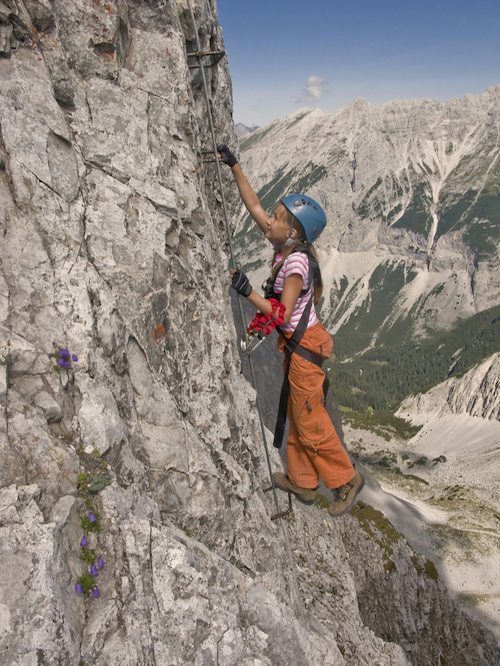Do you ever experience self-doubt when you’re about to do something new?
Do you ever get the jitters and feel nervous?
Do you ever wonder where your self-confidence has gone when this happens?
Guess what…you’re normal!
You’re supposed to feel a little nervous before you do something new because your brain is wired that way to protect you.
 You see, whenever you experience something new, your brain builds connections called “neural pathways” that let you know that you’ve experienced it before. That’s how your memories are built and how you learn new things.
You see, whenever you experience something new, your brain builds connections called “neural pathways” that let you know that you’ve experienced it before. That’s how your memories are built and how you learn new things.
The more you do something, the stronger those neural pathways will become.
If your brain hasn’t experienced something before, it doesn’t have any neural pathways for it and therefore doesn’t know HOW to think about it. Experiencing something new causes your brain to put your body on alert in case the new thing is dangerous — your senses become more alert, your heart rate increases, and you many feel nervous, anxious, or excited.
The good news is, once you start building neural pathways, your brain settles in and says, “OK…I’ve done this before. It’s going to be OK. I can relax now.”
Let’s look at an example…
Say you’ve never jumped off of a high dive before. The first time you climb up the ladder, your body will feel a little nervous – your mind knows that jumping from a high place can be dangerous. But as soon as you take your first jump, and live to tell about it, your brain will build a neural pathway letting you know that when you jump off of a high dive into deep water – you will be OK. The second time you jump, you won’t feel as nervous as the first…and by the 10th jump you’ll probably be having so much fun that you won’t be nervous at all. You see, each time you jump, the neural pathways become stronger and your brain becomes more comfortable with the activity.
But what if your nerves and self-doubt keep you from ever taking that first jump?
What if they keep you from ever taking on new challenges or taking risks?
 This can be a debilitating experience for many people and is what keeps many kids from ever stepping outside of their comfort zone to go for their dreams. The good news is that you can learn to settle your nerves and boost your self-confidence before you take on the new task. And so can kids.
This can be a debilitating experience for many people and is what keeps many kids from ever stepping outside of their comfort zone to go for their dreams. The good news is that you can learn to settle your nerves and boost your self-confidence before you take on the new task. And so can kids.
How? By building neural pathways before you’ve actually experienced the new situation.
Here is a four step process that you can teach kids and that you can use to help calm your nerves, boost your self-confidence, build neural pathways, and train your brain for success!
First, visualize your success.
Visualization is the process of imagining yourself in the future having already achieved your goal. Research has shown that when people actively visualize an activity, their brain will “fire”, or respond, in the same way it fires when the person is actually doing that activity. So if you actively visualize something in your mind, your brain responds as though it has done it before.
Second, develop your plan.
Research your goal. Talk with experts. Know your course of action! The more you learn about the new experience, and prepare for the new experience, the stronger the neural pathways become. Planning will also support you in visualizing your success.
Third, monitor and manage your self-talk.
Self-talk is the thoughts and words that you say to yourself. Monitor your self-talk to make sure that you are sending yourself positive, supportive messages. For example, if you hear yourself say “I don’t know how,” shift your words to “How can I?” If you hear yourself say, “I’ve never done this before,” shift your self-talk to “I’ve got a plan for success”. If you hear yourself saying, “I’m confused,” shift your self-talk to “I am figuring this out”. Positive self-talk is critical for developing powerful self-confidence.
Fourth, remind yourself of past successes.
Create a “Victory Board” that reminds you of previous successes (this would be a fun activity for the kids in your out-of-school program). Every time you look at your victory board, it reminds you that you have been successful in the past and you will be successful again. This repetitive practice strengthens your neural pathways for success!
Now you have a neural pathway for neural pathways!
I’d like to invite you to take time to share this information with the kids in your lives. Learning this process at a young age will help kids learn to overcome nervousness and build powerful self-confidence when faced with new situations.
For more information about how you can use stories to help kids develop a mindset for happiness, confidence, and success in their lives, visit Adventures in Wisdom to check out a free story.
For breakfast I had an egg white and turkey sausage breakfast taco along with my homemade dark chocolate cafe mocha!
Author Profile: @renayethornborrow
